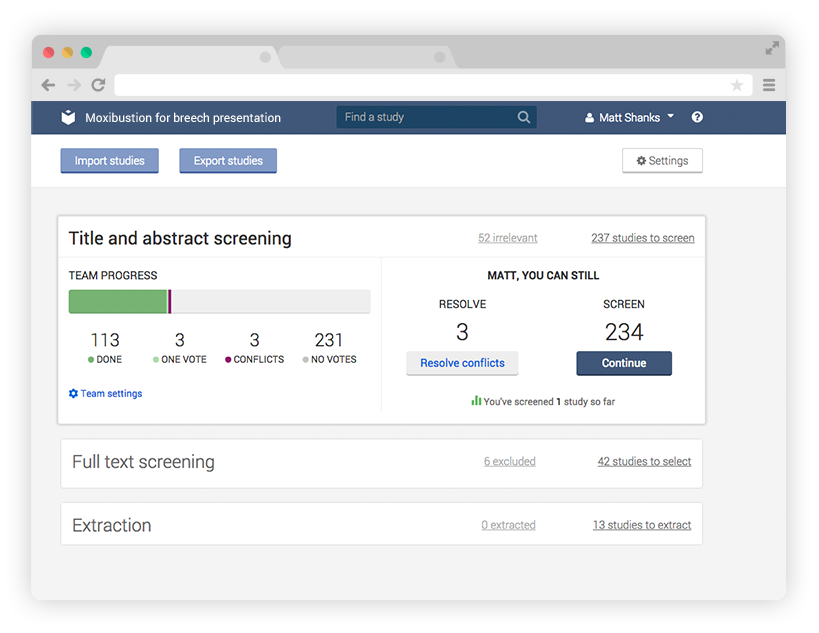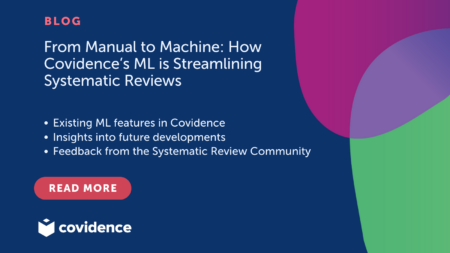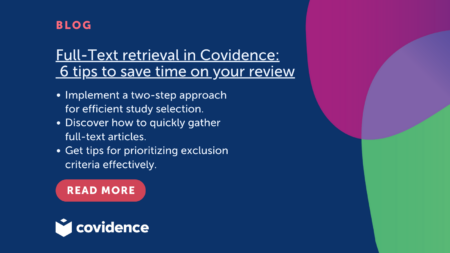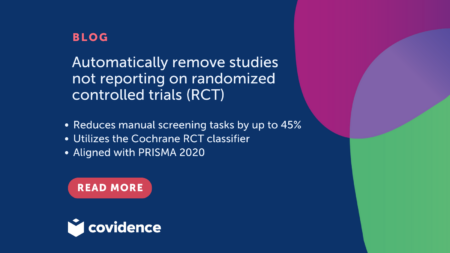In research, evidence synthesis is key – it’s a systematic process that produces reliable conclusions. Covidence, a web-based platform, streamlines this process by managing and analyzing large volumes of research data, making it very easy for researchers.
Understanding Evidence Synthesis
Evidence synthesis is a process that collects, appraises, and synthesizes research evidence. It provides a comprehensive way to understand a particular topic. The purpose of evidence synthesis is to provide an unbiased and comprehensive assessment of the available evidence on a given topic. This approach helps overcome the limitations of individual studies by synthesizing their findings, identifying patterns, and drawing more robust conclusions.

Types of Evidence Synthesis
There are various types, each with its own goals and methods. These include:
Systematic Review
Systematic reviews are a rigorous and transparent approach to evidence synthesis. They involve systematically searching for and selecting relevant studies, critically appraising their quality, extracting data, and synthesizing the findings. Systematic reviews often use meta-analysis to combine the results of studies statistically, providing a quantitative summary of the evidence.
Meta-analysis
Meta-analysis is a statistical technique used in evidence synthesis to combine the results of multiple studies quantitatively. It involves pooling data across studies, calculating summary effect sizes, and assessing the overall treatment effect or relationship between variables. Meta-analysis provides a more precise estimate of the effect size by increasing the sample size and statistical power.
Rapid evidence assessments
Rapid Evidence Assessments (REAs) are a form of evidence synthesis that aims to provide a timely and efficient review of the existing evidence on a specific research question or topic. REAs are often conducted when there is a need for quick evidence-based decision-making or when time or resource constraints limit the feasibility of conducting a full systematic review.
Narrative Reviews
Narrative reviews involve a qualitative synthesis of evidence without a predefined systematic approach. They typically provide a descriptive overview of the literature, summarize key findings, and discuss the strengths and limitations of the included studies. Narrative reviews are useful for generating hypotheses, exploring complex topics, or providing a broad overview of the evidence.
Scoping Reviews
Scoping reviews aim to map the existing literature on a specific topic, identifying key concepts, sources, and knowledge gaps. They involve a systematic search and screening process, but may not include a detailed assessment of study quality or data synthesis. Scoping reviews are useful for identifying research priorities, defining research questions, or exploring the breadth of a topic.
Mixed Methods Reviews
Mixed methods reviews combine qualitative and quantitative evidence synthesis approaches. They integrate findings from both qualitative and quantitative studies to provide a more comprehensive understanding of the research question. Mixed methods reviews are particularly useful when the research question requires insights from both types of evidence.
Role of Covidence
Covidence simplifies evidence synthesis by providing a central hub for research teams, making study management more efficient.

Key Features and Benefits
Study Selection
Streamlines and simplifies the screening and selection process for research studies. Researchers can import studies, collaborate in real-time, and efficiently apply inclusion/ exclusion criteria to identify relevant studies.
Data Extraction
Researchers can use Covidence to streamline data extraction, ensuring consistency and accuracy across multiple reviewers. The text is correctly formatted, but the span tag is unnecessary and can be deleted.
Risk of Bias Assessment
Covidence helps to evaluate the quality and reliability of evidence by facilitating the assessment of the risk of bias in included studies. This tool is beneficial to researchers as it aids in determining the credibility and dependability of the evidence presented.
Reference Management
Integrating with tools like EndNote and Zotero, Covidence makes organizing and citing relevant studies easier.
Why Covidence for Evidence Synthesis
Covidence stands out for its functionality, user-friendly interface, collaboration features, and customizability; it’s the complete solution for evidence synthesis.
User-friendly interface
Covidence offers an intuitive and user-friendly interface, making it accessible to researchers with varying levels of technical expertise. Its well-designed features and streamlined workflow boost efficiency and user-friendliness.
Collaboration features
Covidence excels at facilitating collaboration among team members. Real-time collaboration features, conflict resolution tools, and team communication capabilities enhance teamwork and ensure a consistent and robust synthesis of evidence.
Customizability and Flexibility
Covidence allows users to customize various aspects of the evidence synthesis process, such as inclusion/exclusion criteria, data extraction forms, and risk of bias assessment tools. This flexibility accommodates different research objectives and methodologies.
Ongoing Development and Support
Covidence continually evolves and improves based on user feedback and emerging research needs. Its dedicated customer support team ensures that users receive timely assistance and guidance throughout their evidence synthesis projects.

A Quick 8-Step Guide to Using Covidence
Create an Account
Visit www.covidence.org and set up an account.
- Create a new account by providing your email address and setting up a password.
- Depending on your research needs, you can choose between an individual or an organisation account.
Set Up a Review
Click on “Start a New Review”
- Provide a review title under the “name your review” heading.
- Select the appropriate review type (e.g., systematic, scoping, rapid umbrella, or literature review).
Customize Review Settings
Add team members and define eligibility criteria.
- In the review settings, you can customize various options, such as adding project team members and defining eligibility criteria.
- The collaboration settings allow team members to work together seamlessly by assigning roles and permissions.
Import Studies
Import relevant studies from literature databases.
- Covidence supports direct import from popular literature databases, including Scopus, PubMed, Embase, and Cochrane Library.
- Use the search function within Covidence to find relevant studies and then import them into your review.
Screen and Select Studies
Use predetermined criteria to select studies.
- With the imported studies, Covidence provides an interface for screening and selecting studies based on predetermined inclusion and exclusion criteria.
- Collaborative features enable multiple reviewers to independently screen and assess the eligibility of studies.
- Reviewers can make decisions on study inclusion (yes), exclusion (no), or uncertain status (maybe), with conflicts resolved through discussion and consensus.
Extract Data
Design forms based on the review objectives.
- Covidence allows you to design data extraction forms based on your review objectives and variables of interest.
- Customize the data extraction fields to capture relevant information from each included study.
- Multiple reviewers can independently extract data with the ability to resolve any discrepancies through discussion and consensus.
Appraise Quality
Perform a quality appraisal of the included studies.
- Cochrane Risk of Bias tool is the default tool in Covidence.
- You can customise the quality appraisal tool based on the specific research objectives and study designs.
- Multiple reviewers can independently appraise the quality of studies, and disagreements can be resolved through discussion and consensus.
Export Data
Export data to various platforms for further analysis.
- Covidence allows the export of different types of data including the reference list, PRISMA flow diagram data, extracted data from studies, and quality assessment data.
- The data can be exported into various formats such as Excel, CSV, and RIS to meet diverse analysis and reporting needs.
Conclusion
Covidence revolutionizes the evidence synthesis process by simplifying study selection, data extraction, risk of bias assessment, and quality appraisal. By streamlining these tasks, Covidence enhances efficiency, promotes collaboration among team members, and ensures the production of high-quality synthesized evidence. Researchers can leverage Covidence to unlock the full potential of evidence synthesis and advance knowledge in their respective fields.



